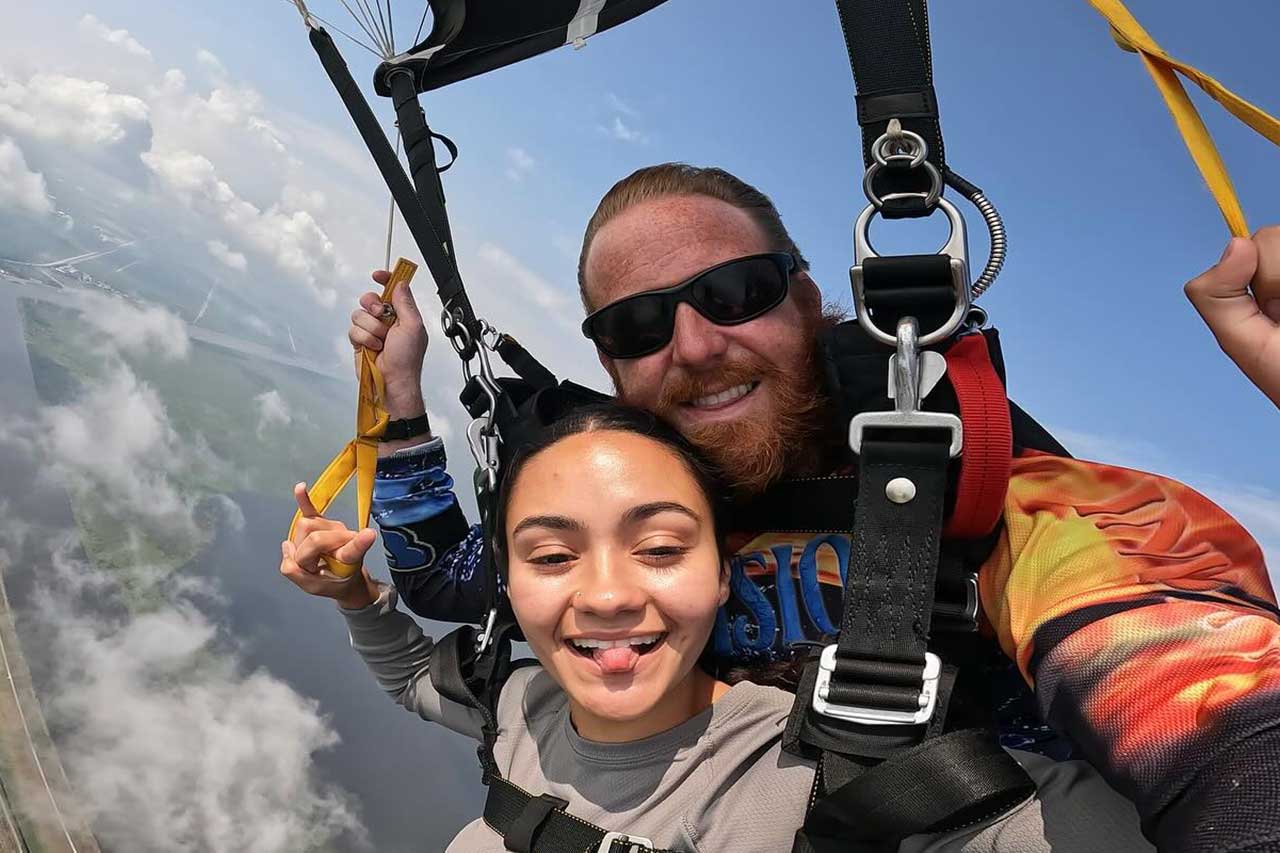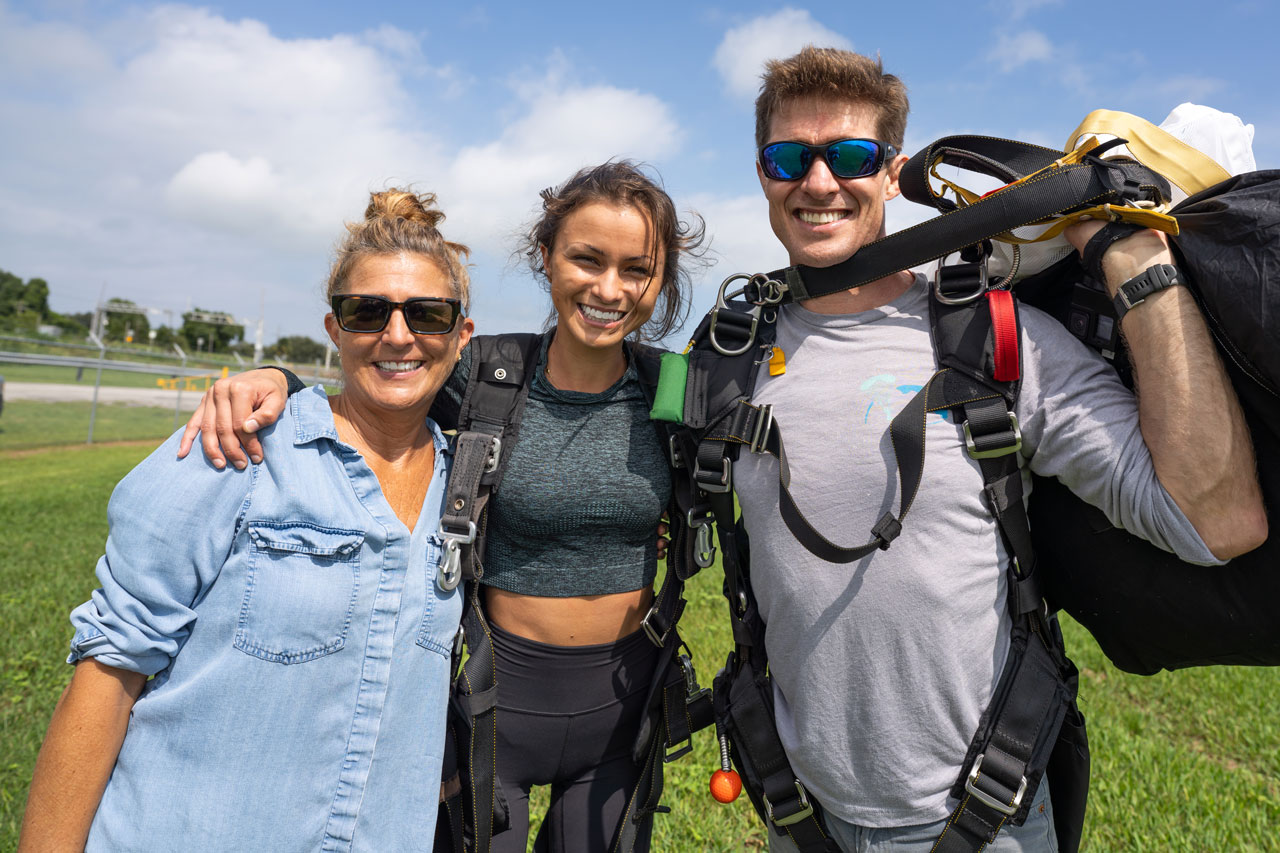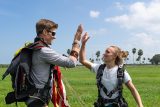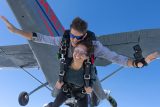Do You Have to be Physically Fit to Skydive?
DZ News
Posted by: Skydive Palm Beach
1 week ago
Do you need to be physically fit to skydive? Skydiving doesn’t demand superhuman fitness, but it does require you to be in reasonably good health. Whether you’re booking a tandem skydive or planning to train for solo skydiving, it’s important to understand that this is a physical activity. The better prepared your body is, the smoother and safer your experience will be.
But don’t let that scare you off! You absolutely don’t need to be a triathlete to enjoy a tandem skydive. As long as you meet the basic requirements to skydive, which include being at least 18 years old (there’s no upper age limit), under the max weight for skydiving, and in generally good health, you’re likely good to go.

Let’s dive into the details and discuss the level of fitness that is needed to skydive.
What Fitness Means for Skydiving
You’re not just along for the ride. Even on a tandem jump, you’re an active participant. That means being able to complete the necessary movements for a successful skydive. What really matters in skydiving is:
- Basic flexibility
- Functional core strength
- Mental alertness and readiness
These aren’t complicated, but they do take a little mobility and strength. If you can follow instructions, move your body with some coordination, and stay mentally focused, you’re already most of the way there.
Tandem Jump vs. Solo Jump: Fitness Expectations
For a tandem skydive, you’ll still need to complete a few important tasks, but the physical demands are much lower than what’s required to skydive solo. You’ll be responsible for maintaining your body position in freefall and lifting your legs for landing, but your experienced tandem instructor will be doing most of the work.
Learning to skydive solo requires more physical readiness. Your body position and flexibility become especially important for stability during freefall. And unlike a tandem, where your instructor lands the parachute for you, solo skydivers must learn how to land themselves safely. This includes learning how to do a parachute landing fall (PLF), a controlled technique used to distribute the impact of a landing. It’s a move that takes coordination, awareness, and some physical agility.
Here’s a simple breakdown:
Fitness Level Tandem Jump Solo Jump Notes
| Fitness Level | Tandem Jump | Solo Jump | Notes |
| Low | Yes | Probably not (yet) | Tandem is accessible for most; solo requires more preparation |
| Average | Yes | With training | Basic fitness is enough for student programs like AFF |
| High | Yes | Easy adaptation | Physically active folks progress more quickly |
What Movements Are Involved in Skydiving?
Still wondering what kind of movement skydiving involves? Here’s a breakdown of what your body will likely be doing:
- Boarding the aircraft: You may need to crouch, kneel, or duck-walk in tight quarters.
- Exiting the aircraft: Depending on the type of aircraft, your mobility, and your instructor’s approach, you may need to kneel, crouch, or sit at the edge of the door for exit.
- Arching in freefall: This is the most stable body position in freefall. Your instructor will help, but it’s important that you can hold the arch position.
- Lifting your legs for landing: This is critical during tandem skydives. You’ll need to be able to lift and hold your legs out in front of you so your instructor can land first and safely bring you both in.
None of these movements are extreme, but they do require a basic level of mobility, strength, and body awareness.
Disabilities and Special Considerations
Skydiving is more inclusive than many people realize. While not every medical condition or disability is compatible with jumping, many dropzones work with people who have:
- Physical disabilities: Some facilities have adaptive tandem equipment and specially trained instructors.
- Chronic conditions: If your doctor clears you and you’ve disclosed everything during booking, you may still be able to jump.
Be upfront about your health history when you book your jump. Some situations may require a doctor’s note or additional planning to ensure your jump is safe for both you and your instructor.

Who Should Use Extra Caution
Some conditions may disqualify you from skydiving. If any of the following apply to you, consult both your doctor and your skydiving center before booking:
- Pregnant: Skydiving is not recommended at any stage.
- Recently injured: Especially involving the spine, knees, or joints.
- Heart, lung, or seizure conditions: These may disqualify you, or at least require clearance from your doctor.
When in doubt, ask. Safety is always the top priority.
Final Thoughts: The Sky Is for (Almost) Everyone
You don’t need six-pack abs or a perfect gym routine, just a body and mindset that are ready to participate. Skydiving is one of the most freeing, joyful experiences you can have, and with a little preparation, it’s more accessible than many people realize.
So don’t stress about being in perfect shape. If your body is mobile, your mind is alert, and you’re ready to follow instructions, there’s a good chance you can fly! Ready to test your limits and feel the rush? Book your jump and take the leap!


